
Varian Microeconomics Workout
.pdf
(b) Suppose that Marsha can borrow and lend at an interest rate of 50%. On the graph where you labelled her initial endowment, draw the budget line showing all of the bundles she can a®ord if she invests in the cookie jar and borrows or lends at the interest rate of 50%. On the same graph use red ink to draw one or two of Marsha's indi®erence curves.
Period-2 consumption
80
60
40
20
0 |
20 |
40 |
60 |
80 |
|
|
Period-1 consumption |
||
(c) Suppose that instead of consumption in the two periods being perfect substitutes, they are perfect complements, so that Marsha's utility function is minfc1; c2g. If she cannot borrow or lend, should she buy the
cookie jar? |
|
If she can borrow and lend at an interest rate of |
||
50%, should she invest in the cookie jar? |
|
If she can borrow or |
||
lend as much at an interest rate of 100%, should she invest in the cookie
jar? .

The fundamental equilibrium condition for asset markets is that in equilibrium the rate of return on all assets must be the same. Thus if you know the rate of interest and the cash °ow generated by an asset, you can predict what its market equilibrium price will be. This condition has many interesting implications for the pricing of durable assets. Here you will explore several of these implications.
A drug manufacturing ¯rm owns the patent for a new medicine. The patent will expire on January 1, 1996, at which time anyone can produce the drug. Whoever owns the patent will make a pro¯t of $1,000,000 per year until the patent expires. For simplicity, let us suppose that pro¯ts for any year are all collected on December 31. The interest rate is 5%. Let us ¯gure out what the selling price of the patent rights will be on January 1, 1993. On January 1, 1993, potential buyers realize that owning the patent will give them $1,000,000 every year starting 1 year from now and continuing for 3 years. The present value of this cash °ow is
$1; 000; 000 + 1; 000; 000 + 1; 000; 000 » $2; 723; 248: (1:05) (1:05)2 (1:05)3
Nobody would pay more than this amount for the patent since if you put $2,723,248 at 5% interest, you could collect $1,000,000 a year from the bank for 3 years, starting 1 year from now. The patent wouldn't sell for less than $2,723,248, since if it sold for less, one would get a higher rate of return by investing in this patent than one could get from investing in anything else. What will the price of the patent be on January 1, 1994? At that time, the patent is equivalent to a cash °ow of $1,000,000 in 1 year and another $1,000,000 in 2 years. The present value of this °ow, viewed from the standpoint of January 1, 1994, will be
$1; 000; 000 + 1; 000; 000 » $1; 859; 310: (1:05) (1:05)2
A slightly more di±cult problem is one where the cash °ow from an asset depends on how the asset is used. To ¯nd the price of such an asset, one must ask what will be the present value of the cash °ow that the asset yields if it is managed in such a way as to maximize its present value.
People will be willing to pay $15 a bottle to drink a certain wine this year. Next year they would be willing to pay $25, and the year after that they would be willing to pay $26. After that, it starts to deteriorate and the amount people are willing to pay to drink it falls. The interest rate is 5%. We can determine not only what the wine will sell for but also when it will be drunk. If the wine is drunk in the ¯rst year, it would have to sell for $15. But no rational investor is going to sell the wine for
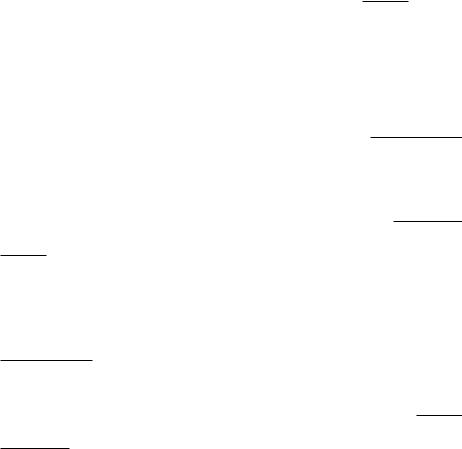
$15 in the ¯rst year, because it will sell for $25 one year later. This is a 66:66% rate of return, which is better than the rate of interest. When the interest rate is 5%, investors are willing to pay at least $25=1:05 = $23:81 for the wine. So investors must outbid drinkers, and none will be drunk this year. Will investors want to hold onto the wine for 2 years? In 2 years, the wine will be worth $26, so the present value of buying the wine and storing it for 2 years is $26=(1:05)2 = $23:58. This is less than the present value of holding the wine for 1 year and selling it for $25. So, we conclude that the wine will be drunk after 1 year. Its current selling price will be $23:81, and 1 year from now, it will sell for $25.
11.0 Warm Up Exercise. Here are a few problems on present values. In all of the following examples, assume that you can both borrow and lend at an annual interest rate of r and that the interest rate will remain the same forever.
(a) You would be indi®erent between getting $1 now and dollars, one year from now, because if you put the dollar in the bank, then one
year from now you could get back |
|
dollars from the bank. |
||
(b) You would be indi®erent between getting |
|
dollar(s) one year |
||
from now and getting $1=(1 + r) dollars now, because
deposited in the bank right now would enable you to withdraw principal and interest worth $1.
(c) For any X > 0, you would be indi®erent between getting
dollars right now and $X one year from now. The present value
of $X received one year from now is |
|
dollars. |
(d) The present value of an obligation to pay $X one year from now is
dollars.
(e) The present value of $X, to be received 2 years from now, is
dollars.
(f) The present value of an asset that pays Xt dollars t years from now
is |
|
dollars. |
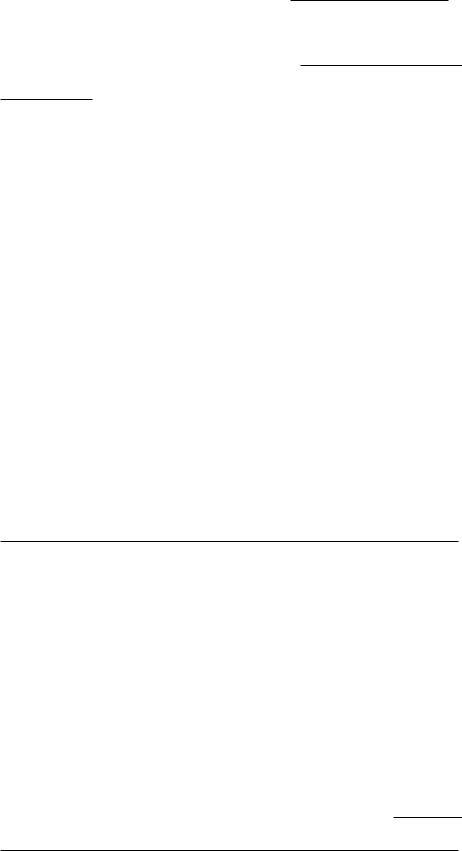
(g) The present value of an asset that pays $X1 one year from now, $X2
in two years, and $X10 ten years from now is
dollars.
(h) The present value of an asset that pays a constant amount, $X per year forever can be computed in two di®erent ways. One way is to ¯gure out the amount of money you need in the bank so that the bank would give you $X per year, forever, without ever exhausting your principal.
The annual interest received on a bank account of |
|
dollars |
||
will be $X. Therefore having |
|
dollars right now is just as |
||
good as getting $X a year forever. |
|
|
|
|
(i) Another way to calculate the present value of $X a year forever is to
evaluate the in¯nite series |
|
This series is known as a |
|||
|
|||||
|
|
series. Whenever r > 0, this sum is well de¯ned and is |
|||
equal to |
|
|
. |
||
|
|
||||
(j) If the interest rate is 10%, the present value of receiving $1,000 one
year from now will be, to the nearest dollar, |
|
The present |
value of receiving $1,000 a year forever, will be, to the nearest dollar,
.
(k) If the interest rate is 10%, what is the present value of an asset that requires you to pay out $550 one year from now and will pay you back
$1,210 two years from now? |
|
dollars. |
11.1 (0) An area of land has been planted with Christmas trees. On December 1, ten years from now, the trees will be ready for harvest. At that time, the standing Christmas trees can be sold for $1,000 per acre. The land, after the trees have been removed, will be worth $200 per acre. There are no taxes or operating expenses, but also no revenue from this land until the trees are harvested. The interest rate is 10%.
(a) What can we expect the market price of the land to be?
.
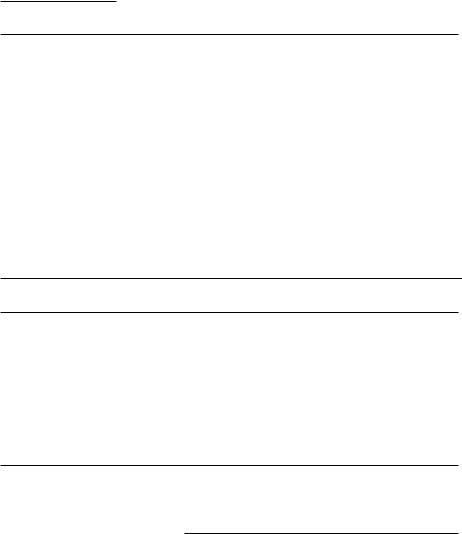
(b) Suppose that the Christmas trees do not have to be sold after 10 years, but could be sold in any year. Their value if they are cut before they are 10 years old is zero. After the trees are 10 years old, an acre of trees is worth $1,000 and its value will increase by $100 per year for the next 20 years. After the trees are cut, the land on which the trees stood can always be sold for $200 an acre. When should the trees be cut to maximize the present value of the payments received for trees and land?
What will be the market price of an acre of land?
.
11.2 (0) Publicity agents for the Detroit Felines announce the signing of a phenomenal new quarterback, Archie Parabola. They say that the contract is worth $1,000,000 and will be paid in 20 installments of $50,000 per year starting one year from now and with one new installment each year for next 20 years. The contract contains a clause that guarantees he will get all of the money even if he is injured and cannot play a single game. Sports writers declare that Archie has become an \instant millionaire."
(a) Archie's brother, Fenwick, who majored in economics, explains to Archie that he is not a millionaire. In fact, his contract is worth less than half a million dollars. Explain in words why this is so.
.
Archie's college course on \Sports Management" didn't cover present values. So his brother tried to reason out the calculation for him. Here is how it goes:
(b) Suppose that the interest rate is 10% and is expected to remain at 10% forever. How much would it cost the team to buy Archie a perpetuity that would pay him and his heirs $1 per year forever, starting in 1 year?
.
(c) How much would it cost to buy a perpetuity that paid $50,000 a year
forever, starting in one year? . In the last part, you found the present value of Archie's contract if he were going to get $50,000 a year forever. But Archie is not going
to get $50; 000 a year forever. The payments stop after 20 years. The present value of Archie's actual contract is the same as the present value of a contract that pays him $50,000 a year forever, but makes him pay back $50,000 each year, forever, starting 21 years from now. Therefore you can ¯nd the present value of Archie's contract by subtracting the present value of $50,000 a year forever, starting 21 years from now from the present value of $50,000 a year forever.
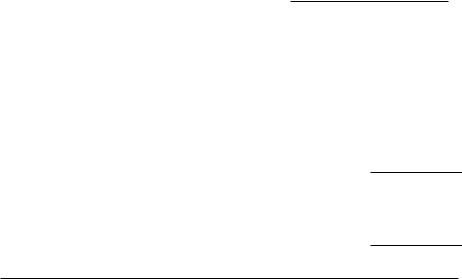
(d) If the interest rate is and will remain at 10%, a stream of payments of $50,000 a year, starting 21 years from now has the same present value
as a lump sum of $ |
|
to be received all at once, exactly 20 years |
from now. |
|
|
(e) If the interest rate is and will remain at 10%, what is the present value
of $50,000 per year forever, starting 21 years from now?
(Hint: The present value of $1 to be paid in 20 years is 1=(1+r)20 = :15.)
(f) Now calculate the present value of Archie's contract.
.
11.3 (0) Professor Thesis is puzzling over the formula for the present value of a stream of payments of $1 a year, starting 1 year from now and continuing forever. He knows that the value of this stream is expressed by the in¯nite series
S = |
1 |
+ |
1 |
+ |
1 |
+ : : : ; |
1 + r |
(1 + r)2 |
(1 + r)3 |
but he can't remember the simpli¯ed formula for this sum. All he knows is that if the ¯rst payment were to arrive today, rather than a year from now, the present value of the sum would be $1 higher. So he knows that
S + 1 = 1 + |
1 |
+ |
1 |
+ |
1 |
+ : : : : |
(1 + r) |
(1 + r)2 |
(1 + r)3 |
Professor Antithesis su®ers from a similar memory lapse. He can't remember the formula for S either. But, he knows that the present value of $1 a year forever, starting right now has to be 1 + r times as large as the present value of $1 a year, starting a year from now. (This is true because if you advance any income stream by a year, you multiply its present value by 1+r.) That is,
1 + |
1 |
+ |
1 |
+ |
1 |
+ : : : = (1 + r)S: |
||
(1 + r) |
|
(1 + r)2 |
|
(1 + r)3 |
||||
(a) If Professor Thesis and Professor Antithesis put their knowledge together, they can express a simple equation involving only the variable S.
This equation is S + 1 = |
|
Solving this equation, they ¯nd |
||
that S = |
|
|
. |
|

(b) The two professors have also forgotten the formula for the present value of a stream of $1 per year starting next year and continuing for K years. They agree to call this number S(K) and they see that
S(K) = |
1 |
+ |
1 |
+ : : : + |
1 |
: |
(1 + r) |
(1 + r)2 |
(1 + r)K |
Professor Thesis notices that if each of the payments came 1 year earlier, the present value of the resulting stream of payments would be
1 + |
1 |
+ |
1 |
+ : : : + |
1 |
= S(K) + 1 ¡ |
1 |
: |
||
(1 + r) |
|
(1 + r)2 |
|
(1 + r)K¡1 |
(1 + r)K |
|||||
Professor Antithesis points out that speeding up any stream of payments by a year is also equivalent to multiplying its present value by (1 + r). Putting their two observations together, the two professors noticed an equation that could be solved for S(K). This equation is S(K) + 1 ¡
1 |
= |
|
|
Solving this equation for S(K), they ¯nd that |
||
|
(1+r)K |
|
|
|||
|
|
|
||||
the formula for S(K) is |
|
|
. |
|||
11.4 (0) You are the business manager of P. Bunyan Forests, Inc., and are trying to decide when you should cut your trees. The market value of the lumber that you will get if you let your trees reach the age of t years is given by the function W (t) = e:20t¡:001t2 . Mr. Bunyan can earn an interest rate of 5% per year on money in the bank.
The rate of growth of the market value of the trees will be greater
than 5% until the trees reach |
|
years of age. (Hint: It follows |
from elementary calculus that if F (t) = eg(t), then F 0(t)=F (t) = g0(t).)
(a) If he is only interested in the trees as an investment, how old should
Mr. Bunyan let the trees get? |
|
. |
(b) At what age do the trees have the greatest market value?
.
11.5 (0) You expect the price of a certain painting to rise by 8% per year forever. The market interest rate for borrowing and lending is 10%. Assume there are no brokerage costs in purchasing or selling.
(a) If you pay a price of $x for the painting now and sell it in a year, how much has it cost you to hold the painting rather than to have loaned the
$x at the market interest rate? |
|
. |
|

(b) You would be willing to pay $100 a year to have the painting on your walls. Write an equation that you can solve for the price x at which you
would be just willing to buy the painting |
|
. |
(c) How much should you be willing to pay to buy the painting?
.
11.6 (2) Ashley is thinking of buying a truckload of wine for investment purposes. He can borrow and lend as much as he likes at an annual interest rate of 10%. He is looking at three kinds of wine. To keep our calculations simple, let us assume that handling and storage costs are negligible.
²Wine drinkers would pay exactly $175 a case to drink Wine A today. But if Wine A is allowed to mature for one year, it will improve. In fact wine drinkers will be willing to pay $220 a case to drink this wine one year from today. After that, the wine gradually deteriorates and becomes less valuable every year.
²From now until one year from now, Wine B is indistinguishable from Wine A. But instead of deteriorating after one year, Wine B will improve. In fact the amount that wine drinkers would be willing to pay to drink Wine B will be $220 a case in one year and will rise by $10 per case per year for the next 30 years.
²Wine drinkers would be willing to pay $100 per case to drink Wine C right now. But one year from now, they will be willing to pay $250 per case to drink it and the amount they will be willing to pay to drink it will rise by $50 per case per year for the next 20 years.
(a)What is the most Ashley would be willing to pay per case for Wine
A? |
|
. |
(b) What is the most Ashley would be willing to pay per case for Wine
B? (Hint: When will Wine B be drunk?)
(c) How old will Wine C be when it ¯rst becomes worthwhile for investors
to sell o® their holdings and for drinkers to drink it?
(Hint: When does the rate of return on holding wine get to 10%?)
(d) What will the price of Wine C be at the time it is ¯rst drunk?
.
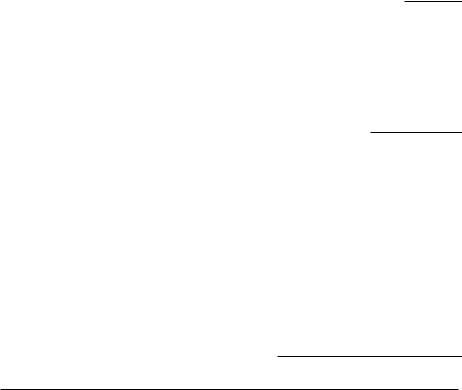
(e) What is the most that Ashley would be willing to pay today for a case of Wine C? (Hint: What is the present value of his investment if he sells it to a drinker at the optimal time?) Express your answer in exponential
notation without calculating it out. |
|
. |
11.7 (0) Fisher Brown is taxed at 40% on his income from ordinary bonds. Ordinary bonds pay 10% interest. Interest on municipal bonds is not taxed at all.
(a) If the interest rate on municipal bonds is 7%, should he buy municipal
bonds or ordinary bonds? |
|
. |
(b) Hunter Black makes less money than Fisher Brown and is taxed at only 25% on his income from ordinary bonds. Which kind of bonds should
he buy? |
|
. |
(c) If Fisher has $1,000,000 in bonds and Hunter has $10,000 in bonds,
how much tax does Fisher pay on his interest from bonds?
How much tax does Hunter pay on his interest from bonds? |
|
. |
(d) The government is considering a new tax plan under which no interest income will be taxed. If the interest rates on the two types of bonds do not change, and Fisher and Hunter are allowed to adjust their portfolios,
how much will Fisher's after-tax income be increased?
How much will Hunter's after-tax income be increased? |
|
. |
(e) What would the change in the tax law do to the demand for municipal
bonds if the interest rates did not change? |
|
. |
(f) What interest rate will new issues of municipal bonds have to pay in
order to attract purchasers? |
|
. |
(g) What do you think will happen to the market price of the old munici-
pal bonds, which had a 7% yield originally?
.
11.8 (0) In the text we discussed the market for oil assuming zero production costs, but now suppose that it is costly to get the oil out of the ground. Suppose that it costs $5 dollars per barrel to extract oil from the ground. Let the price in period t be denoted by pt and let r be the interest rate.
